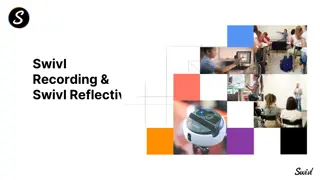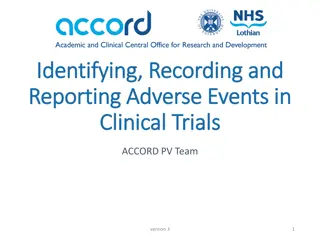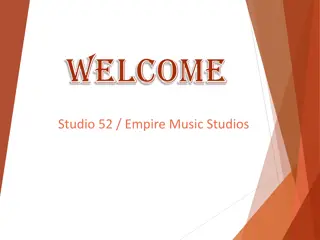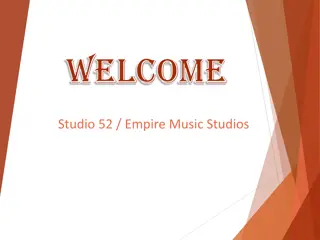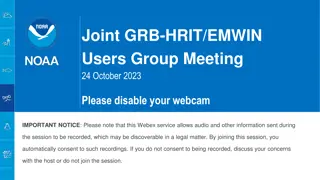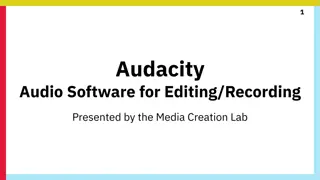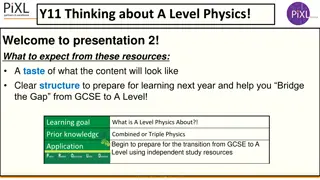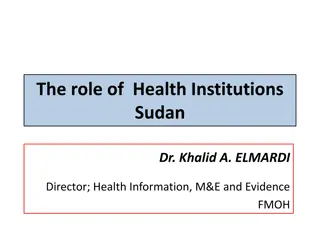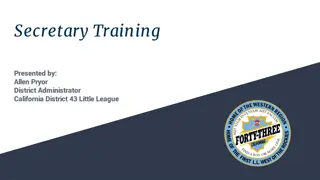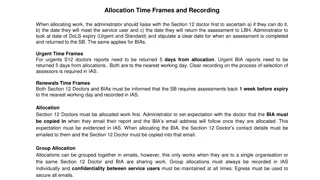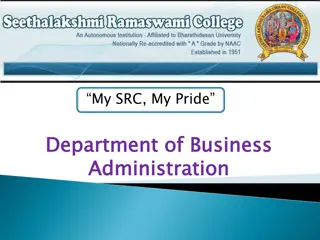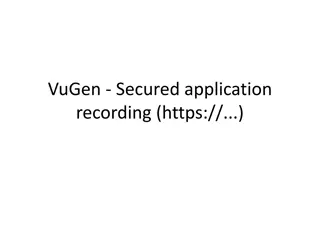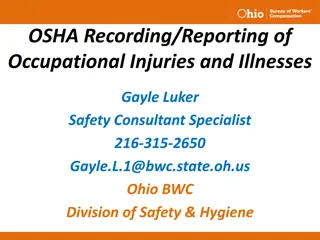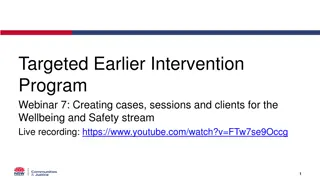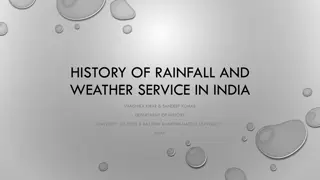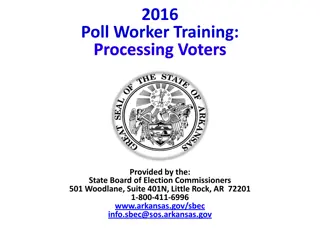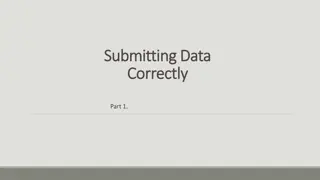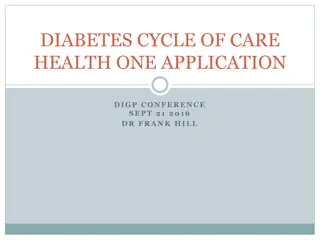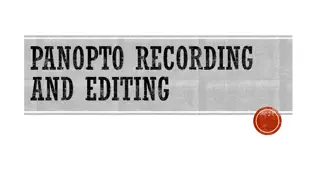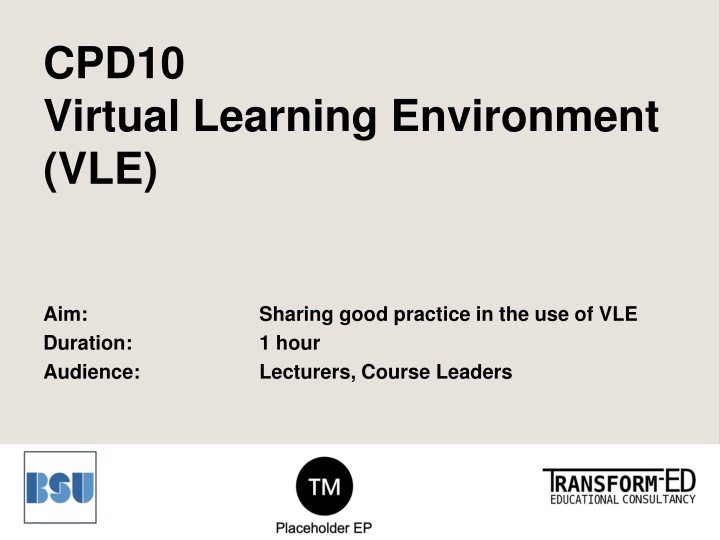
Effective Practices for Virtual Learning Environment (VLE) in Higher Education
Enhance your knowledge about VLE accessibility regulations, inclusivity principles, good practices, and educational design at BSU. Explore digital fluency, inclusive learning, student profiles, and legal requirements for accessibility in education.
Download Presentation

Please find below an Image/Link to download the presentation.
The content on the website is provided AS IS for your information and personal use only. It may not be sold, licensed, or shared on other websites without obtaining consent from the author. If you encounter any issues during the download, it is possible that the publisher has removed the file from their server.
You are allowed to download the files provided on this website for personal or commercial use, subject to the condition that they are used lawfully. All files are the property of their respective owners.
The content on the website is provided AS IS for your information and personal use only. It may not be sold, licensed, or shared on other websites without obtaining consent from the author.
E N D
Presentation Transcript
CPD10 Virtual Learning Environment (VLE) Aim: Duration: Audience: Sharing good practice in the use of VLE 1 hour Lecturers, Course Leaders Placeholder EP
Learning Outcomes 1. To understand the new regulations regarding VLE and accessibility in HE. 2. To integrate VLE good practice as part of the Accessibility and Inclusivity Education Principle. Placeholder EP
Content VLE and the Education Design Principles at BSU BSU Good practice for Accessible Teaching and Learning Regulations Good practice exemplars Placeholder EP
Educational Design Principles INCLUSIVE TEACHING CONNECTIVITY CREATIVITY Active Learning COLLABORATIVE LEARNING CURIOSITY DRIVEN PEDAGOGIES SUSTAINABILITY DIGITAL FLUENCY
Digital Fluency My students use and experience relevant and appropriate digital technologies. DIGITAL FLUENCY My students understand the digital competencies they need and are encouraged to continually develop them. My teaching and learning activities effectively uses the Virtual Learning Environment (or equivalent) to provide a coherent and consistent blended learning experience for our students.
Inclusive Learning My teaching, learning and assessment materials and activities are inclusive and accessible My teaching and learning activities draw on a diversity of contributors to the discipline INCLUSIVE TEACHING
Student Profile How information is shared with students Learning Modality Empathy and Care Digital Modes Giving enough time and space for listening to students and then to make reasonable adjustments Physical and Online Environments How students move from one space to other Flexibility
Legal requirements Public Sector Bodies Accessibility Regulations 2018 The Web Content Accessibility Guidelines (WCAG) improving web accessibility. Accessibility Equality Diversity and Inclusion
Empathy, Clarity and Communication Focused on the principle rather than on the technology LEARNING MATERIALS PLANNING WCAGG 2.2. COLLABORATIVE WORK AND ASSESSMENT Perceivable Operable Understandable Robust TEACHING
VLE requirements (1) All content and resources for the module are made available on the VLE or hyperlinked from it Content follows the same structure across all modules Content is inclusive and accessible. Please refer to BSU s Teaching Expertise Guide for support and refer to the Digital Accessibility Guidance Assessment briefs (including methods and weightings) and marking criteria are provided in VLE modules within the first two weeks of the semester/trimester Assessment timelines (submission deadlines and feedback return dates) are published in the VLE module
VLE requirements (2) Modules are populated with details according to the information in the approved Definitive Programme Document (DPD) Feedback for summative assessments is provided in the VLE within 15-20 working days of the assessment deadline, with dissertations and major projects taking up to 30 days On campus and online lectures for the module are recorded and made available to students in the VLE. All recordings are captioned. Relevant materials and resources are uploaded at least 48 hours before the start of the session Academic Access Plans (or equivalent) are actioned
Good Practice Please check that your VLE allows students to: Zoom in up to 200% without the text spilling off the screen Navigate most of the site using just a keyboard Navigate most of the site using speech recognition software Access most of the site using a screen reader
Make it yours Principle Practice Guidelines Your VLE Always record with captions and transcription. Materials are uploaded with a minimum of 48 hours advance. Accessibility issues Alternative formats Uploading and accessibility Documents Assessment guides and feedback Clarity of ILO, Dates, procedures, uploading. Part of the lecture
Summary The VLE is a good platform to share information and make learning to happen Students access information in different ways and have diverse learning approaches Easy to apply routines can save time. 14 Placeholder EP
Just One Thing Make sure your recordings have CC (captions) and transcription. Or decide what is most urgent for you 15 Placeholder EP
Resources The ultimate guide from BSU for Accessible Teaching and Learning Web content accessibility guidelines WCAG2.2. BSU Accessibility Statement for Ultra VLE 16 Placeholder EP

